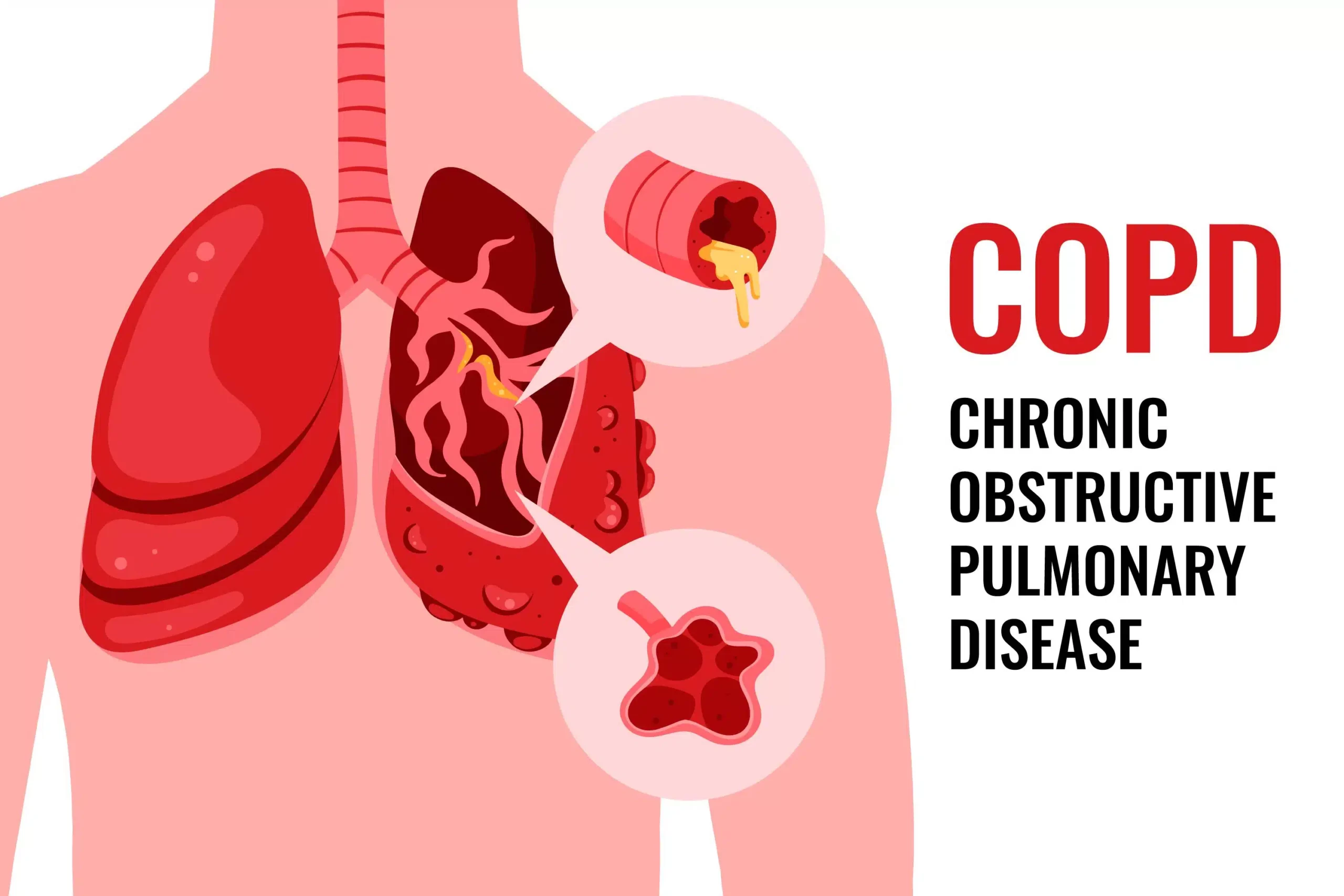Chronic Obstructive Pulmonary Disease (COPD) is a prevalent and serious health condition that affects millions of individuals in the United States and worldwide, presenting a substantial public health challenge. Symptoms of COPD include persistent airflow limitation and chronic inflammation of the airways, making it a leading cause of morbidity and mortality. According to the American Lung Association, approximately 12.5 million Americans are diagnosed with COPD, and it is estimated that millions more are undiagnosed, emphasizing the urgent need for awareness and proactive management.
COPD is associated with a range of debilitating health risks, including chronic bronchitis, emphysema, and heightened susceptibility to respiratory infections. The disease often results from long-term exposure to irritants such as cigarette smoke, air pollution, or workplace dust and chemicals. It significantly impairs lung function, leading to symptoms like shortness of breath, chronic cough, and increased mucus production, which can severely impact one’s quality of life.
Reduce Your Risk & Enhance Your Wellbeing:
- Avoid Tobacco: The most critical step in preventing COPD is to avoid smoking and secondhand smoke exposure. If you currently smoke, seek assistance to quit, as it is the most effective way to halt disease progression.
- Protect Your Lungs: Limit exposure to environmental irritants by using masks or appropriate respiratory protection when necessary, particularly in occupational settings.
- Stay Active: Engage in regular physical activity, such as walking, swimming, or breathing exercises, to improve lung and heart health, strengthen respiratory muscles, and enhance overall fitness.
- Maintain a Healthy Diet: A balanced diet rich in nutrients can boost your immune system and overall health. Ensure you consume a variety of fruits, vegetables, whole grains, lean proteins, and stay hydrated.
- Vaccinations: Protect yourself against respiratory infections by getting flu and pneumonia vaccines, as these infections can exacerbate COPD symptoms.
- Medication and Treatment: Follow your healthcare provider’s recommendations regarding medications and therapies designed to manage COPD. Regular check-ups are essential to monitor your condition and make adjustments as needed.
- Breathing Techniques: Learning and practicing proper breathing techniques can help improve lung function and manage symptoms.
Prioritizing these lifestyle choices and seeking professional guidance can significantly reduce your risk of developing COPD or help manage the condition if already diagnosed. By understanding the risks, implementing preventive measures, and adhering to a proactive management plan, you can lead a healthier and more fulfilling life. Your health is in your hands, so take action today to protect your lungs and improve your overall well-being.





